Groundsmen Spring Maintenance Guide
written by Brian Sandall March 10, 2020
This late winter/early Spring guide is to help you prepare the plant and soil ready for the season ahead, topics include sections on overseeding, rolling, feeding and much more.
Mowing
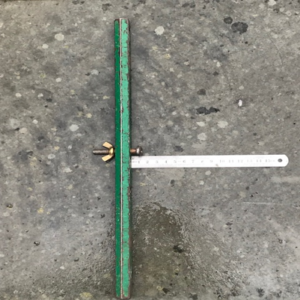
Height bar set to 10mm,above
Do not cut when the ground is frozen but try and get the grass height down on squares, gradually reducing to 12-15 mm by the start of the season.
Don’t take more than a third of the leaf off in any one cut.
Ensure blades are sharpe, to prevent tearing of the leaf.
Box off, all clippings removed from the square.
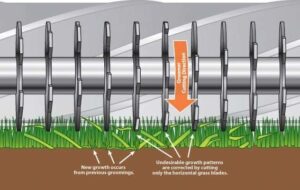
Picture above courtesy of pitchcare.com
Verticutting/Brushing
Over Winter the grass plant sheds leaf’s(known as litter) and debris comes from trees and pests etc, this needs collecting to prevent thatch formation.
Using a grass thinning cassette unit or brush fitting on a sisis auto-rotarake , lightly collect up dead grass and debris before the start of rolling.
Once grass is more vigorously growing, you can verticut it a little more aggressively to keep the grass upright and encourage it to thicken and remove dead grass in pitch prep.
When verticutting do not allow blades to hit the soil surface, only looking to work within the top of the grass canopy, just a few millimetres off the soil surface.
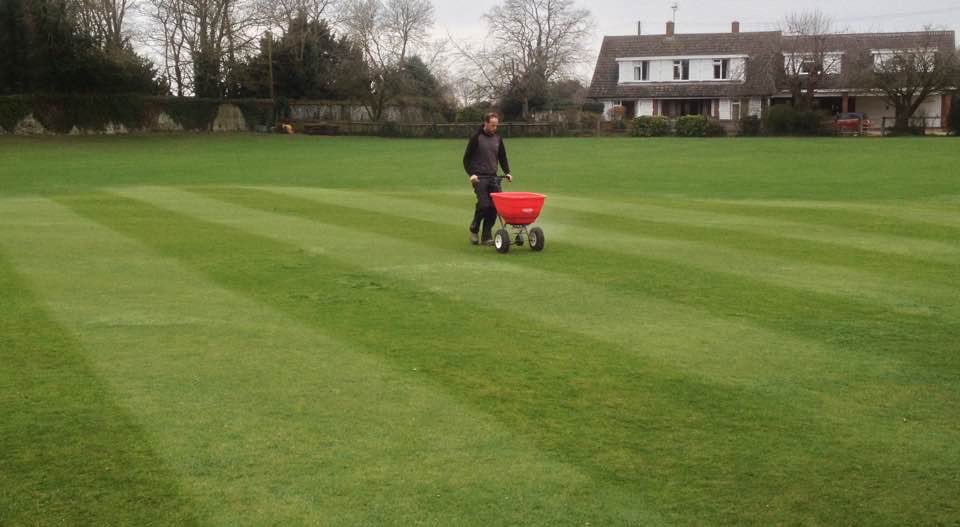
Apply Nutrients
As you cut the grass and box off you will remove nutrients and pre-season rolling, will also put a stress on the plant. The loss in nutrients will need replacing in the form of fertilisation/feeding.
Avoid frosts, if there is any iron in the product.
Fertiliser is the no 1 killer of grass, so avoid spilling on any grass surface when filling the hopper.
Use a cyclone spreader rather than a drop spreader.
Use a low nitrogen fertiliser based product, if unsure ask your fertiliser sales representative.
Ideally, a fertiliser regime should be based on at annual soil testing results.
Allow weather to wash in fertiliser in prior to cutting and rolling, or risk damage to the plant.
The key is not to over feed but keep it light green and avoid periods of yellowing, which is an indication of a hungry grass plant.
Little and often, is a better option than boom to a bust feeding programme.
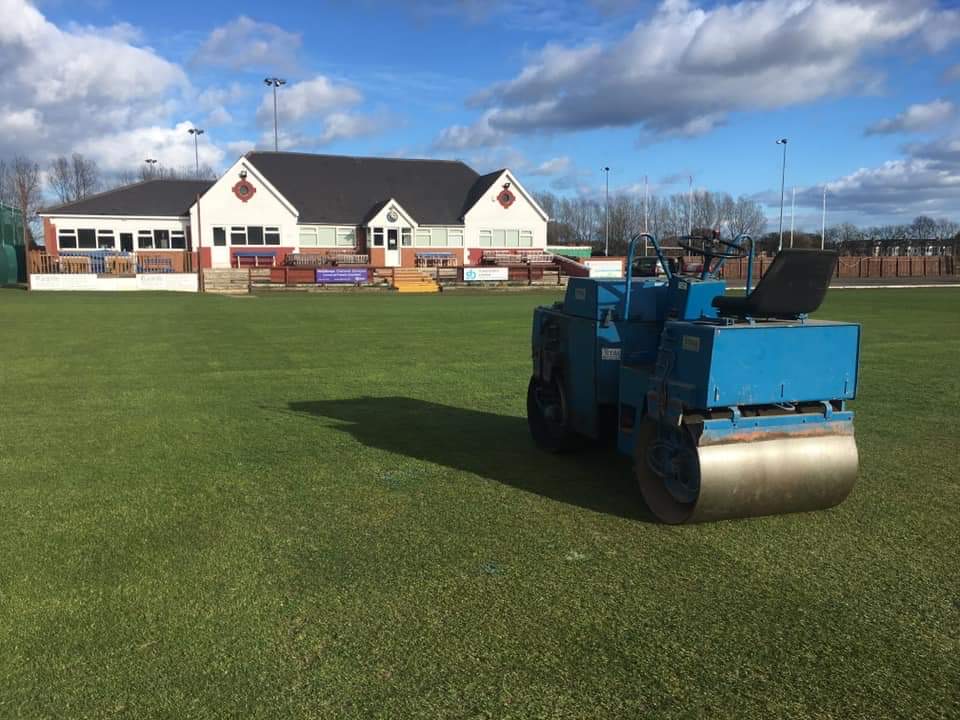
Pre-season rolling
Link to rolling blog-https://turfcareblog.com/essential-guide-to-rolling-iain-james/
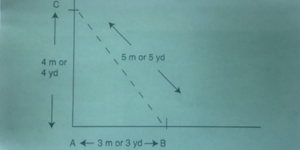
Pythagoras Theorem
Squaring up the square
To ensure the cricket pitch is 66 ft stump to stump , the square should be squared up.
Keep at least the corner position marked to ensure you have something to mark pitches off for the rest of the season.
Squaring up square and rolling https://www.youtube.com/watch?v=Vw1–43lbUg#action=share
Marking out of the first pitch –https://www.youtube.com/watch?v=qp9RViTxKEY
To make it easier and more accurate try instead of 3/4/5 metres, try 9,12,15 metres.
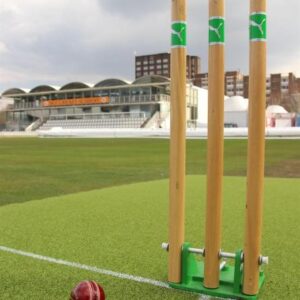
Overseeding
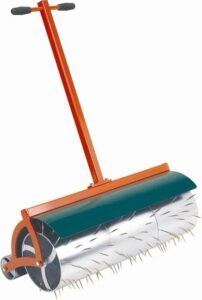
https://www.youtube.com/watch?v=Uc4YrJoi8_0
Ensure you are using 100% rye grass with at least 4 cultivars included.
If you want seed to germinated and establish, you need to create a hole, groove, about 10 mm in depth. The seed needs seed/soil contact and within a groove/hole it is much more likely not be taken off the surface by wash off or birds.
For lots of info on seed see- https://turfcareblog.com/seeds-of-success%f0%9f%8c%b1/
The tool in the picture above is called a sarel spiker, this works well,if not the use of a garden folk will do, especially for smaller areas.
Avoid frost around seeding periods or split the risk, save half your seed for a warmer month, when frost is less prevalent.
Young grass seed does not like (fe) iron, so just double check there is no iron in your fertiliser in or around times of very young seed formation.
When to cut new seed/plant, one tip is when you pull at the new grass plant and it snaps at the leaf, rather than pulls out by the root it is strong enough to be cut.
Be patient with new seed,it can take time to germinate in colder clay soils.
Overseeding can be done from around early/mid-march onwards.
If overseeding larger areas consider using a pre-seed fertiliser which contains a higher level of phosphorus, for root development.
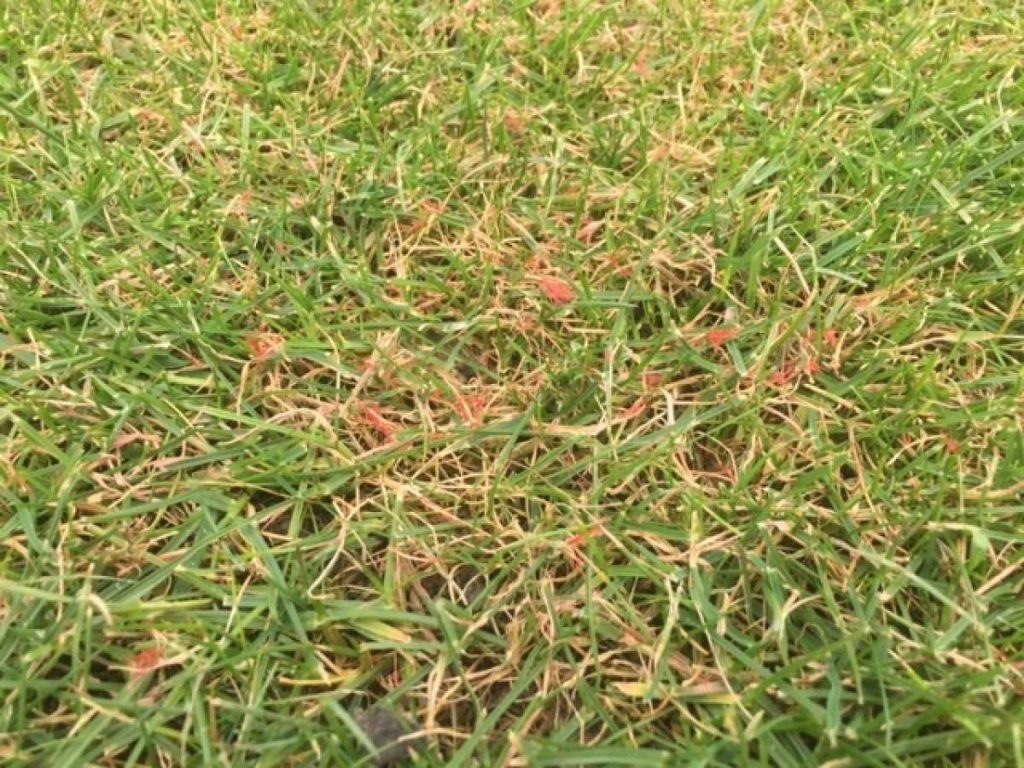
Red Thread disease
Disease and pests
Worm killing chemical control is now out of the question, but there are a few products on the market to prevent unwelcome conditions for casting worms. Only casting worms cause issues, so speak to your sales representative for specific advice.
Another control for worm casts is dispersing with a drag matt or broom. The grass leaf needs to be dry when this is done and this is not always easy, but with other methods somewhat limited it is an option.
The most common turf disease is something called ‘red thread’ as in the picture above. To treat red thread, please go back to the apply nutrients section, as it is a symptom of low nutrition.
Fertiliser applications with the addition of fe (iron) will also keep the plant strong and prevent disease in the first instance and/or the addition of lawn sand.
A cricket loam contains a mix of clay, sand and silt and the sand can be as much as 30% , so a little lawn sand once or twice an autumn/winter should not make much difference.
Any applications of fe(iron) and lawn sand, needs washing well in, prior to cutting and rolling.
Outfields
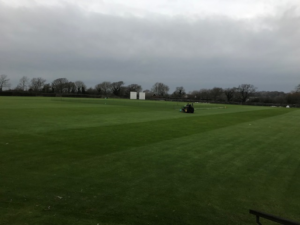 March 2019
March 2019
Groundsman who are already short on time and also having responsibility for an outfield is a challenge.
Keep it simples, do not cut off more than a third of the leaf in any one cut.
Don’t cut too low as to scalp the surface, this will only lead to areas of moss and weeds and bare areas.
Ensure the cylinders are set to cut on the outfield mower, or you will be cutting it much sooner than you hoped.
Nothing wrong with cutting an outfield with a rotary unit, in fact if it has a roller you will not lose presentation and you won’t have the constant issues of having to check the cut.
The ultimate aim is to work the outfield/football pitch down to around 15mm for the early part of the season, some go lower which is great and doable, if you have a dead level outfield and little or no thatch.
Get help from other club members, I hear you, but you can ask and try and create a community feel to your ground staff/helpers.
Ask for help on our social media groups or live chat, always someone to pass on some wisdom.
Birds digging holes in your outfields, if minor and budget a no go, you may be able to wait it out until the ground dries out and becomes to hard to dig. Long term l would advise that you speak to your BASIS certificated sales representatives, as without management of the problem it is sure to come back.
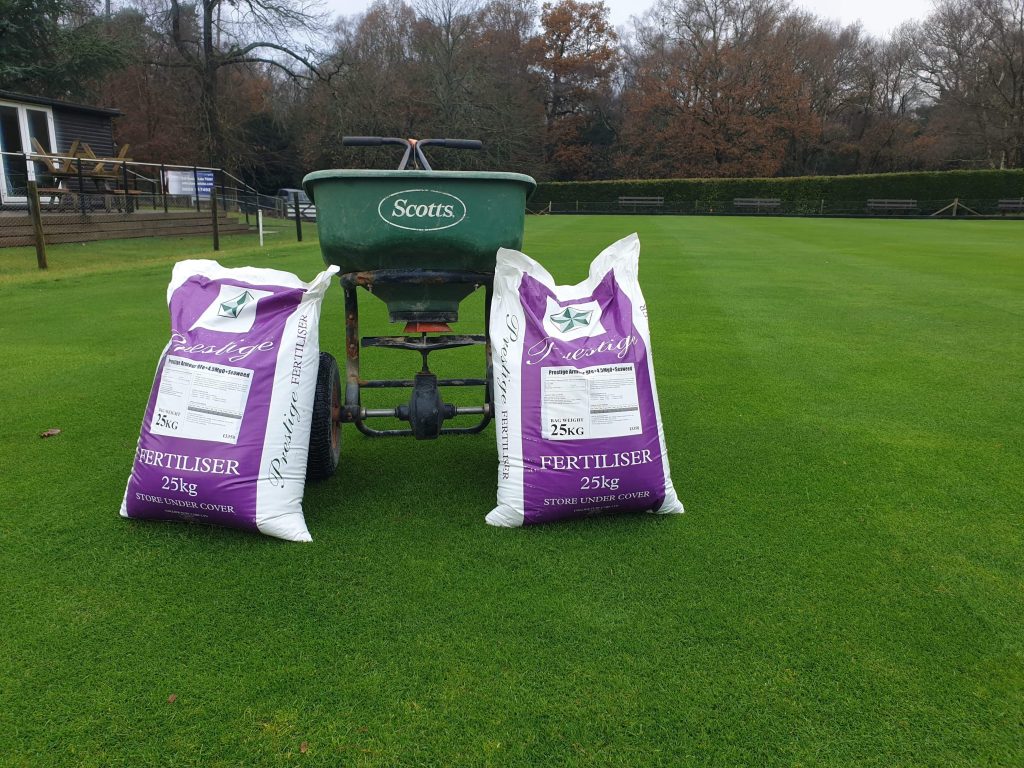
Stock/material procurement
Start now, looking into purchasing of new sheets/cover, non turfs.
Take a look at our buyer’s guide, where you will find anything from mowers, grass seed and match day covers.
Buyers guide- https://turfcareblog.com/buyers-guide/
Top tips
-Use our online community on facebook, use our live chat and also seek professional help when needed via your regional pitch advisors link https://www.iog.org/who-we-are/regional-structure
-Seek learning opportunities through the Institute of Groundsmanship and also your local Association of Cricket Groundman.
-Keep it simple.
-Little and often approach to cutting and feeding.
-Link up with other groundsman locally.
Big thank you for reading and l hope this blog is informative and signposts you to all the information you need, ahead of the season.
Massive thank you, to those who provided the additional pictures.
Brian and Team.
